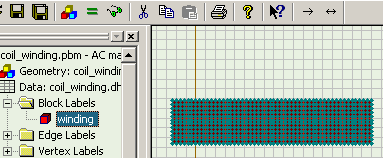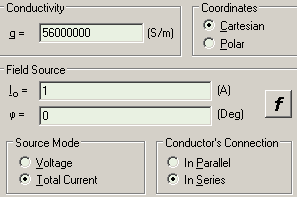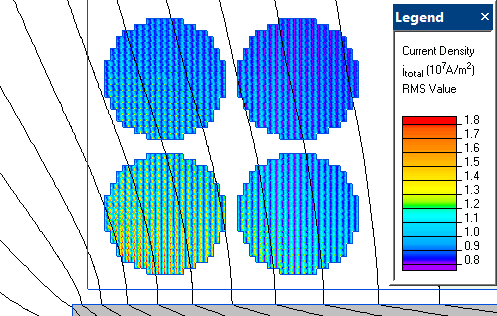Winding modeling
Electromagnetic problem simulation often requires defining a winding with current. There may be several approaches to this. Most straightforward way of including the winding into QuickField simulation is presenting a wire winding with individual loops of the coil shown as a set of cross-sections in the model plane. QuickField blocks related to the same strand should then be assigned the same label and the current density or total current defined in the label property. Radio-button "conductor's connection" should be set to "in Series", which means that the same current flows in every labeled conductor. Number of blocks in this case corresponds to the number of coils, which represent the winding.


But solid wire may cause additional eddy current losses. Litz wire, which consists from many conductors transposed, has less losses and often used for making windings and coils.
Simulation of the windings made with a wire which consists from individual insulated strands is more challenging. If there are not too many strands, they may be presented as individual blocks. One block name corresponds to all cross-sections of the same strand, and these blocks are connected in series (to presume the same current). And then, using QuickField circuit editor, all strands should be connected in parallel.
But then the number of strands in the winding becomes high - this approach requires too much time to define the problem, and extremely complicated problem may be slow to solve. For high number of transposed strands it is easier to present them as a set of QuickField blocks under the same label name, specifying the serial connection, considering all strands carrying the same current (and all strand currents together sum up to a total current in this winding). This approach was implemented in the Stranded wire example.

QuickField flexibility backed by its multi physical nature allows simulating of the electromagnetic and heat transfer problems related to the coils and windings in plenty of electrical engineering applications.
- More about winding modeling simulation and design: Solenoid actuator.
- Additional links on this subject: Coil from Wikipedia, the free encyclopedia.